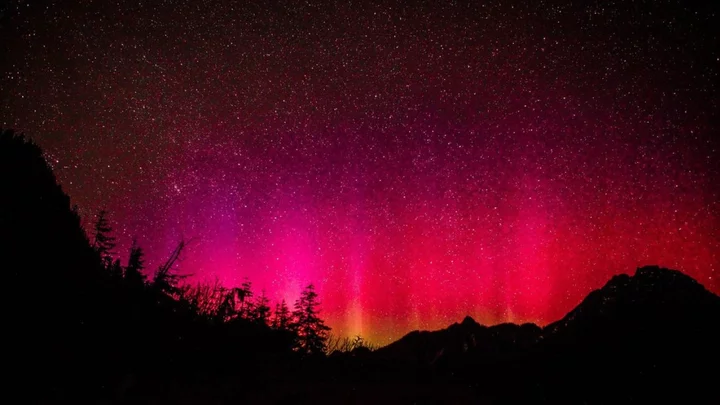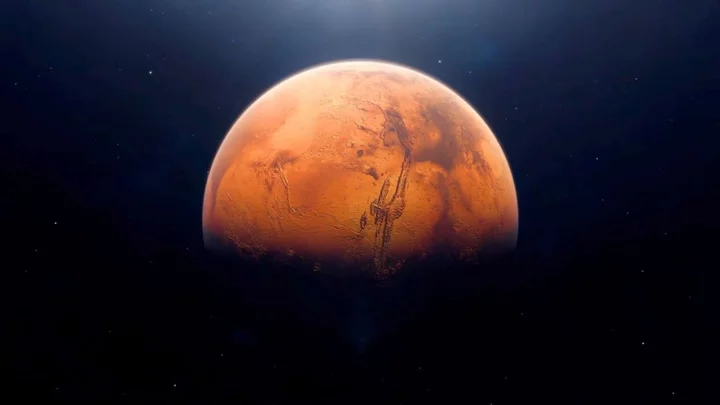
South Korean firms get indefinite waiver on US chip gear supplies to China
Samsung Electronics and SK Hynix will be allowed to supply US chip equipment to their China factories indefinitely without separate US approvals, South Korea's presidential office and the companies said on Monday.
2023-10-10 11:58

Hamas Outmaneuvered Israel’s Surveillance Prowess by Going Dark
Facing one of the most sophisticated surveillance states on the planet, Hamas simply went dark. The militant group’s
2023-10-10 11:47

Sikkim: Deadly Indian glacial lake flash flood exposes lack of warning system
After deadly flash floods in Sikkim, experts question why an early warning system was not in place.
2023-10-10 08:25

Banker Planned Metro Bank Rescue From Miami’s Billionaire Bunker
Part of the plan to save Metro Bank Holdings Plc — the UK’s best-known challenger bank — was
2023-10-10 07:46

Audio Invasion: How the Theremin Went From Soviet Labs to Hollywood
The theremin—a spooky instrument that scored the biggest sci-fi films of the 1950s—was invented by accident.
2023-10-10 03:21

Earth was hit by largest ever solar storm that would devastate civilisation today, tree rings show
Earth was once hit by an extreme solar storm that would devastate human civilisation if it happened today, tree rings show. Scientists were able to piece together the solar storm from ancient tree rings that were found in the French alps, and showed evidence of a dramatic spike in radiocarbon levels some 14,300 years ago. That spike was the result of a massive solar storm, the biggest ever found by scientists. If a similar event happened today, it could knock the power grid offline for months and destroy the infrastructure we rely on for communications, scientists have warned. The researchers behind the new study have urged that the extreme nature of the newly discovered event should be a warning for the future. “Extreme solar storms could have huge impacts on Earth. Such super storms could permanently damage the transformers in our electricity grids, resulting in huge and widespread blackouts lasting months,” said Tim Heaton, professor of applied statistics in the School of Mathematics at the University of Leeds. “They could also result in permanent damage to the satellites that we all rely on for navigation and telecommunication, leaving them unusable. They would also create severe radiation risks to astronauts.” Further work is needed to ensure that the world is protected from similar events happening again, scientists said. And more research is required to actually understand how and why they might happen. Scientists have found nine extreme solar storms, or Miayake Events, that happened in the last 15,000 years. The most recent of them happened in the years 993 AD and 774 AD, but the newly found one was twice as powerful as those. Researchers do not know exactly what happened during those Miyake Events, and studying them is difficult because they can only be understood indirectly. That makes it difficult for scientists to know how and when they might happen again, or if it is even possible to predict them. “Direct instrumental measurements of solar activity only began in the 17th century with the counting of sunspots,” said Edouard Bard, professor of climate and ocean evolution at the Collège de France and CEREGE. “Nowadays, we also obtain detailed records using ground-based observatories, space probes, and satellites. “However, all these short-term instrumental records are insufficient for a complete understanding of the Sun. Radiocarbon measured in tree-rings, used alongside beryllium in polar ice cores, provide the best way to understand the Sun’s behaviour further back into the past.”  The largest solar storm that scientists were able to actually observe and study happened in 1859, and is known as the Carrington Event. It caused vast disruption to society, destroying telegraph machines and creating a bright aurora so bright that birds behaved as if the Sun was rising. The Miayake Events like the newly found storm would have been vastly more powerful, however. They were discovered by slicing ancient trees that are becoming fossils into tiny rings, and then analysing the radiocarbon that was present in them. Their work is published in a new article, ‘A radiocarbon spike at 14,300 cal yr BP in subfossil trees provides the impulse response function of the global carbon cycle during the Late Glacial’, in the journal The Royal Society’s Philosophical Transactions A: Mathematical, Physical and Engineering Sciences.
2023-10-10 01:18

Elon Musk's X adds to fog of war at outset of Israel-Hamas conflict
Misinformation has run rampant on Elon Musk's social media platform X in the 48 hours since Hamas militants' surprise attack on Israel, with users sharing false and misleading claims about the conflict and Musk himself pointing users to an account known for spreading misinformation.
2023-10-10 00:47

Why history is on Tottenham's side after record-breaking 20-point haul
The staggering stat that gives Tottenham hope of a top-four place and Premier League title challenge
2023-10-10 00:45

Paul Finebaum roasted Mario Cristobal for all-time bad Miami blunder
Paul Finebaum obliterated Miami Hurricanes head coach Mario Cristobal for one of the worst coaching moments he has ever seen covering college football. He is not wrong though, as what Cristobal did to lose to the Georgia Tech Yellow Jackets was egregious.
2023-10-09 23:23

The sun ripped a hole in the Earth's magnetic field and the results were spectacular
The Sun has been punching holes in the Earth’s magnetic field lately – but that’s not as alarming as it sounds. Instead, they have been sparking magnificent light shows across Europe and North America, made up mainly of crimson auroras and sustained periods of red sky. The displays have been caused by disturbances in the Earth’s magnetic field, which happened after a massive ejection of plasma from the Sun came hurtling our way. The event, known as a coronal mass ejection, made a hole in the planet’s magnetic field, allowing highly charged particles to make their way in and cause a geomagnetic storm. Normally, the Northern Lights are made up of mainly green, with the occasional flash of other colours including red. However, longer periods of red light shows are very rare. The highly charged particles then get channelled towards the north and south poles, where they interact with gas molecules in the atmosphere. They, in turn, release photons, causing the aurora borealis in the north and aurora australis in the south. Normally, the Northern Lights are made up of mainly green, with the occasional flash of other colours including red. However, longer periods of red light shows are very rare. But what makes this geomagnetic storm different is that the particles coming from the Sun collided with oxygen atoms higher in the Earth’s atmosphere than normal. The altitude at which this interaction happens dictates the colour of the aurora. This time, the charged particles were between 300 and 400 kilometres in the sky. There, the oxygen is less concentrated and doesn’t need as much energy to cause it to react. It all adds up to a flash of crimson red light in the sky. Somewhat excitingly for aurora-watchers, this sort of event is likely to get more common over the next two years, as the Sun’s activity becomes heightened until its peak in roughly July 2025. Looks like there will be more of these incredible ruby light shows soon enough. Sign up to our free Indy100 weekly newsletter Have your say in our news democracy. Click the upvote icon at the top of the page to help raise this article through the indy100 rankings.
2023-10-09 23:21

Scientists warn humanity has a '1 in 6' change of dying out this century
In 2020, philosopher Toby Ord published The Precipice, a book on the risk of human extinction. The chances of "existential catastrophe" for humanity in the next century according to Ord? One in six. It was a shocking number that alarmed many. After years of being flooded with warnings over climate change, rogue AI, nuclear weapons and pandemics, it's hard to disagree that humans face worrying chances. In his book, Ord discusses a number of potential extinction events, some of which can be examined through history. His research involved looking at the number of space rocks that have hit the moon over its history to figure out the likelihood than an extinction-sized asteroid hitting Earth. This was, in fact, looked at in 2022 by French scientists Jean-Marc Salotti, he calculated the odds of an extinction-level hit in the next century to be roughly one in 300 million. By contrast, Ord estimated the risk to be one in a million, although he does point out a considerable degree of uncertainty. Probabilities can be hard to understand in this context. Traditional probability, for example, relies on observations and a collection of repeated events, but human extinction would be a one-off. But there is another way to think if, called Bayesianism, after the English statistician Thomas Bayes. It sees probabilities as a ranking system of sorts. Specific number predictions shouldn't be taken so literally, but rather compared to other probabilities to understand the likelihood of each outcome. Ord's book contains a table of potential causes of extinctions, accompanied by his personal estimates of their probability. From a Bayesian perspective, we can view these as relative ranks. Ord thinks extinction from an asteroid strike (one in a million) is much less likely than extinction from climate change (one in a thousand). However, even using Bayesianism traditionally requires the incorporation of observational evidence. So, what do we make of Ord's "one in six"? Well it's better to take it less literally but to think of it as a warning, to jump start action on issues such as climate change to hopefully reduce the risk of human extinction in the next century. Sign up to our free Indy100 weekly newsletter Have your say in our news democracy. Click the upvote icon at the top of the page to help raise this article through the indy100 rankings.
2023-10-09 22:51

Perseverance rover captures stunning blue sunset on Mars
Mars is often called the Red Planet, but a recent image captured by NASA’s Perseverance rover from the surface would go some way to contradicting that. Earlier this year, Perseverance snapped a sunset from Mars in which the Sun looks blue, a sight which would never be seen from our own planet. The photograph was taken on the rover’s 842nd day on the planet, and shows a Martian horizon with the sun setting behind causing an eerily cool glow. Because of Mars’ distance from the Sun, it gets less sunlight than we do on Earth. Even at its sunniest, it gets less than half our quota of light from the star. And the planet’s atmosphere, which is weaker than Earth’s, is mainly made up of carbon dioxide, with a small amount of nitrogen and a trace of oxygen. This gaseous mix and weak atmosphere causes the light to scatter in a blue haze across the sky. It’s the same process which gives us our blue sky during the daytime, when the light has less atmosphere to penetrate before it reaches our eyes. On Earth, this changes when the sun dips below the horizon, and the light has more atmosphere to penetrate, filtering our blue and violet wavelengths, leaving only reds and oranges. Meanwhile on Mars, the sunlight interacts with the dust hanging in the atmosphere, scattering red light during the day. At twilight, that red light is filtered away, leaving blues. Atmospheric scientist Mark Lemmon of Texas A&M University told Science Alert: "The colours come from the fact that the very fine dust is the right size so that blue light penetrates the atmosphere slightly more efficiently. “When the blue light scatters off the dust, it stays closer to the direction of the Sun than light of other colours does. “The rest of the sky is yellow to orange, as yellow and red light scatter all over the sky instead of being absorbed or staying close to the Sun.” Sign up to our free Indy100 weekly newsletter Have your say in our news democracy. Click the upvote icon at the top of the page to help raise this article through the indy100 rankings.
2023-10-09 22:24
